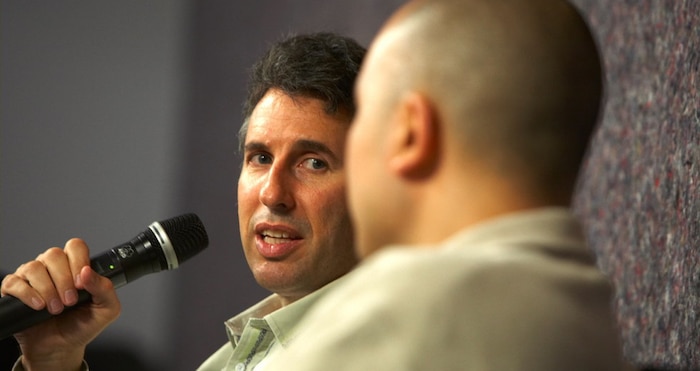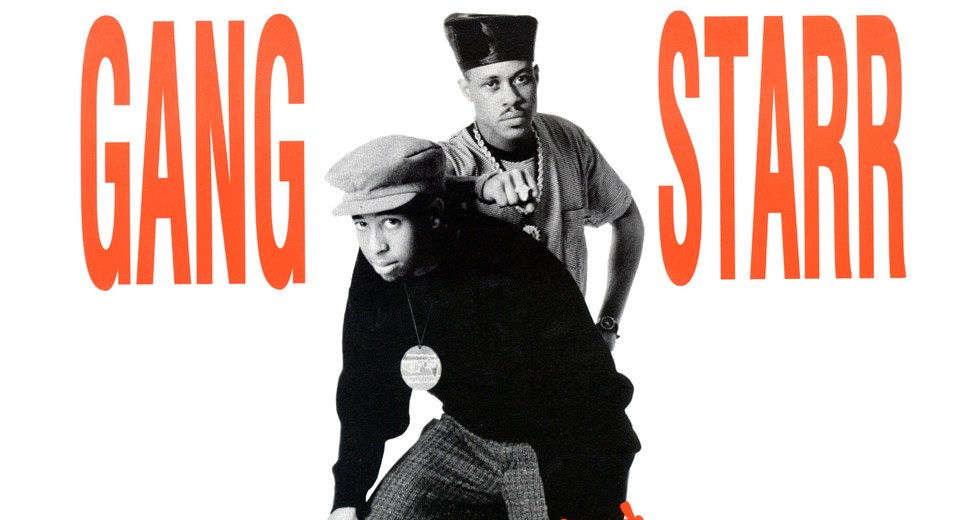Key Tracks: Mario Caldato Jr. on Tone Loc’s “Wild Thing”
Arriving in New York City via Los Angeles, Brazilian-born Mario Caldato Jr. helped shape the sound of ’80s rap’s rugged edges with his engineering work for Tone Loc, Young MC and The Beastie Boys. In this excerpt from his lecture at the 2008 Red Bull Music Academy in Barcelona, Caldato looks back on linking up with Matt Dike and the Beasties and on how he ended up behind the boards for Tone Loc's Van Halen-sampling crossover hit.

There was one spot that we frequented back in those days called Power Tools, which had a very arty New York vibe. It was a club with go-go dancers and live musicians playing and weird art installations and people dressed up very dramatic and stuff. The club started in ’85, but I discovered it in almost ‘86, and I was just hanging out there every weekend. The DJ was really incredible because he would play all genres and keep the dance floor moving. He had a musical knowledge and he knew how to mix stuff from everything. Dance stuff, soul stuff, funk stuff, rock stuff, and make it all work. He’d play even Sergio Mendes, Brazilian or Latin boogaloo stuff, which no one was really playing. He was friends with Andy Warhol and Basquiat and all these people would hang out there. It was a really cool scene.
I happened to be there one night in particular where there was a vibe that something was going on. These rappers were in town and were going to do something. Nobody knew, they were just walking around and next thing you know, the DJ, he didn’t really talk, he would just play music, but the music stops and these three rappers get up on stage and it was the Beastie Boys. They didn’t have a record out, they just had a single out, “Hold It Now, Hit It” or something, and they were in town, and the DJ was friends with them or had invited them up to do something and they got up on stage and said, “We’re going to do a song.” And people were like, “Wow, OK, this is cool,” and they grabbed the mics, and tested the mics, and the DJ up there, DJ Hurricane, was testing out the turntables, and they’re getting ready to drop the first record. He’s like [makes scratching noise] and there’s the intro to the song and the roll, and the first 808 that comes on it just shuts down the whole PA.
[The Beastie Boys] didn’t have a sufficient soundsystem and all this excitement, it was like, “What a bummer!”
They didn’t have a sufficient soundsystem and all this excitement, it was like, “What a bummer!” I was like, “OK, who is the owner here? I’ll go and talk to the guy.” I went to a security guard and said, “Who’s the owner?” And he said, “That guy over there.” I went over there and I spoke to the guy and said, “You need a sound man,” and he said, “Tell me about it, I know.” He goes, “What do you do?” I said, “I’m a sound man,” and he said, “Great, can you come down next week?” So I said yes, ended up coming down the following week with some power amps and some crossovers and then some subwoofers.
I got to meet the DJ, whose name was Matt Dike, he was the head guy there, really, responsible for a lot of things. He was thrilled, he was very embarrassed about the situation, about what had happened with the soundsystem. He was cursing out the guy who had set it up. The next week everybody was like, “Wow, what did you do? It is amazing!” I had raised the speakers and taken them off the ground. You have to get speakers up because everyone was dancing and it cuts off all the high frequencies. I brought in some subwoofers, which was great because the go-go dancers could dance on the subwoofers and everyone could check them out.
He was like: “Man, really? I want to start a label.” I was like: “OK,” and the next week he said, “I got a budget of about $5,000, what can we get?”
That’s when my association with Matt started. I would hang out with him in the DJ booth, which was a privilege because nobody really got to hang out there. Fab Five Freddy was a good friend, and these guys would sleep at his house – Warhol and Basquiat and Fab Five Freddy – because Matt was actually from New York originally. After a while, he was getting a little tired of the DJ thing, he’d been doing it for years. He could move the crowd and knew what records work and what breaks, he was really into the breaks.
Obviously, rap music was really developing and there was a lot of sampling going on and he started to understand what was going on. He was like, “Man, I have to do this.” He really wanted to be a producer and make some records and he said, “I can do it,” you know? And he made an attempt to record his friend Kevin Dolan playing drums, had him play “Funky Drummer” for like ten minutes on this 4-track cassette, just so that he can have a long break. One night he brought the 4-track to the club and said, “Can we hook this up to the mixer so we can play it?” And I said, “Yes, of course.” I rigged it for him and EQed it a bit and gave it a little quick mix because he didn’t really have it mixed right and then we cued it up.
When the time was right we started it and played it and he had the crowd moving. But nobody noticed that the record switched to a cassette of the drummer, his friend playing drums. It was working and he got so happy he was like, “This is great! We are making it.” I said, “We could do a lot more. I know how to record.” He was like, “Let’s make a record.” I was like, “I already made a record, a 7-inch.” He was like: “Man, really? I want to start a label.” I was like: “OK,” and the next week he said, “I got a budget of about $5,000, what can we get?” He goes, “I need a sampler, I know what I want to get.”
At the time the SP-12 was out, one of the first sampling drum machines that all the hip hop kids took to using at the time. We also bought an 8-track Tascam 388, a mixer and recorder all in one, which was convenient and practical for what we were using it for and within the budget. So we went and got it and set up the studio in his living room. I told him I had some microphones and reverbs and delays and compressors and cabling and all that stuff. I hooked it up like a studio. That was the beginning of Delicious Vinyl, his living room.
Matt had a friend, Mike Ross, who was also a kind of DJ guy, who worked at MCA, and was an assistant to an A&R guy. He would sit around and listen to demo tapes all day and filter them out and give them to his boss. He would see his boss and listen to stuff and he’d say, “This is crap.” There was a big pile of stuff, he would go through the piles they didn’t use and would be like, “Wow, this guy here…”
They would have their name on what was – back then – a cassette. They would write their name and phone number on it, their contacts, and it was just right there, like Tone Loc and Young MC. Matt, within the first week he got a drum machine, locked himself away, just pulling out all his break beats, “Scorpio” and everything you can imagine. He started looping up all the best parts that worked on the dancefloor and started creating some grooves. He didn’t play, so his tools were his turntables and his records and he would go and match the pitch and figure stuff out and started mapping out songs every day, one or two songs.
After about a week, he had ten songs and his friend showed up with the demo tapes, like, “Let’s try these guys and have them maybe rap over one or two of these songs,” and it basically started off like that. Guys would show up and be like, “Hey, how about this track?” We would play the track and would figure out a theme or something. One of the first tracks Tone did was “Cheeba Cheeba.” He liked to get his weed on, so that was an obvious first track for him.
At some point Matt found a Van Halen riff. He was really inspired by the Rick Rubin rap/rock thing, and I guess he was trying to emulate that kind of vibe. He brought a West Coast vibe to it. Nobody would do something like that, but he just used the intro and the little guitar hits. He actually came up with the concept of the track “Wild Thing.” He’d seen Spike Lee’s movie She's Gotta Have It, and they say the “wild thing” in there, and he’s like, “That’s it right there, we got to do that.”
So we told the concept to Young MC, who was a good lyrical writer. Young went and wrote all these rhymes. Loc didn’t really write any of the rhymes on that one, but he was the perfect voice for it. I didn’t think much of it after we did it. I thought, “This is all right,” but when you put it all together – the video, the timing of it too. And it does work on the dancefloor, I’ve got to say. I still hear it nowadays, even though I live in Brazil now. I hear it in the favelas. They sample that roll and the intro and his voice. And it still rocks. Who would imagine we mixed it in a little living room on a minimal set up in the closet?

